The Thai Roasted Chili Paste known as Nam Prik Pao is an incredibly useful ingredient in Thai cooking. Used as a seasoning paste as well as a relish, spread, or dip, this is one Thai condiment you'll want to become familiar with!

Once you've tasted the Thai Roasted Chili Paste known as Nam Prik Pao, you'll likely be able to recognize it in a variety of Thai dishes. This essential ingredient in the Thai kitchen has a fairly distinct flavor, one that is unlike chili pastes from other cuisines. The Thai version has a fantastic smokiness as a first taste which is balanced by prominent sweet and spicy notes. There are also subtle salty, sour, and savory flavors in the background, making this Roasted Chili Paste a wonderful "all-in-one” Thai seasoning paste.
Jump to:
What is Thai Roasted Chili Paste?
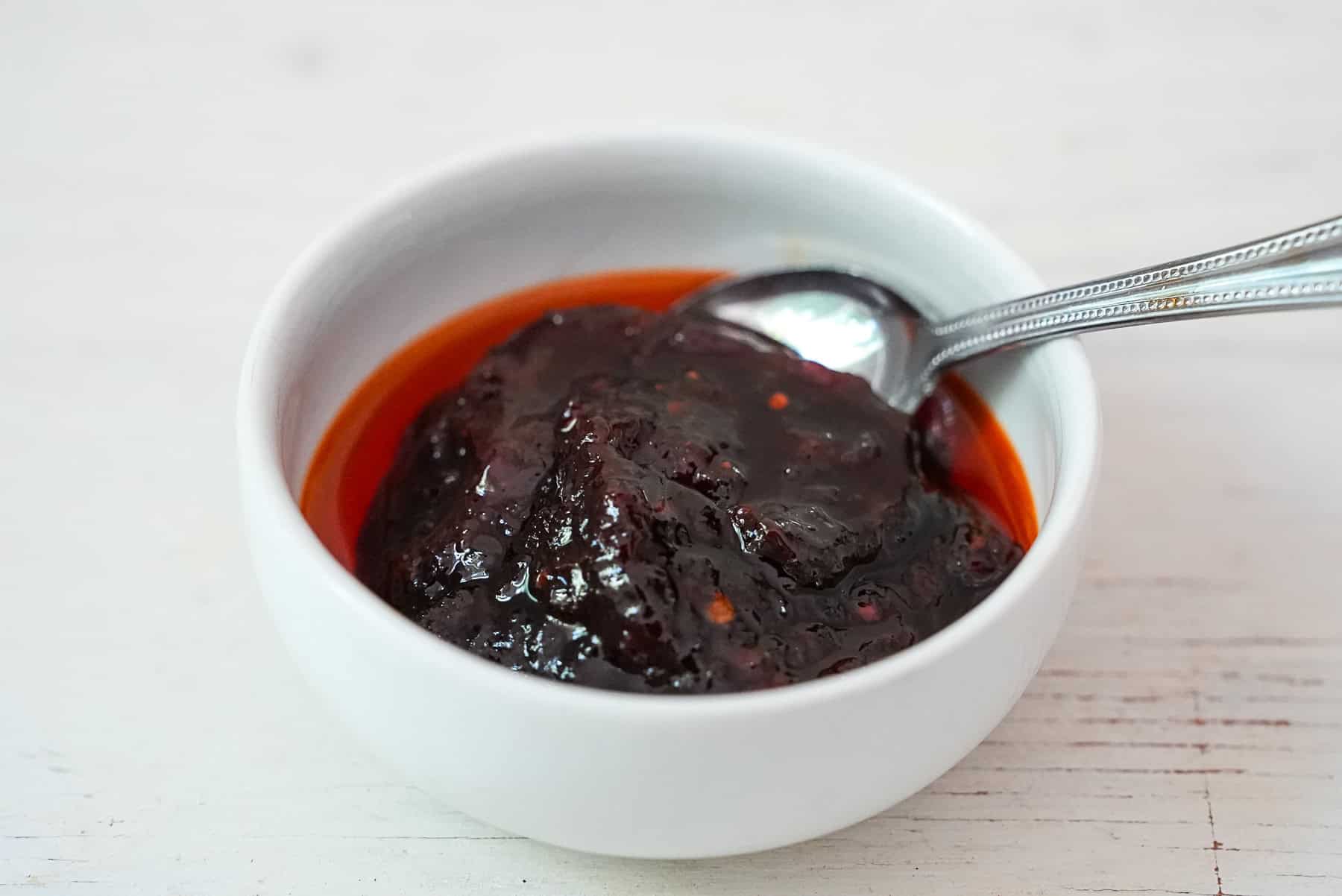
Thai Roasted Chili Paste is known as Nam Prik Pao. It is a dark red chili-based paste or relish that is used frequently in Thai cuisine, from adding depth of flavor to Tom Yum soup to spreading it on toast as a jam. Its name literally translates to “Roasted Chili Paste”, as “Nam Prik” refers to chili-based pastes or relishes and “Pao” means roasted. However, in a nod to the generous amount of oil that this paste is fried in, it is also sometimes referred to as Chili Paste in Oil. You may also see it referred to as Chili Jam.
What does Nam Prik Pao taste like?
Nam Prik Pao has all of the flavors that Thai food is famous for: salty, sweet, spicy, and sour. It is predominantly spicy from the roasted Thai chilis, followed by a sweetness from the palm sugar. Tamarind paste contributes a very slight sour note. The fish sauce, dried shrimp, and shrimp paste balance the other flavors with their salty and savory tastes. All of these flavors are combined with a fantastic roasted, smoky flavor.
When used properly, the addition of Nam Prik Pao can make a Thai dish really shine. When too much is used in a dish, however, the seafood flavors can become prominent, perhaps to the point of being unpleasant for a Western palate.
How is Nam Prik Pao made?
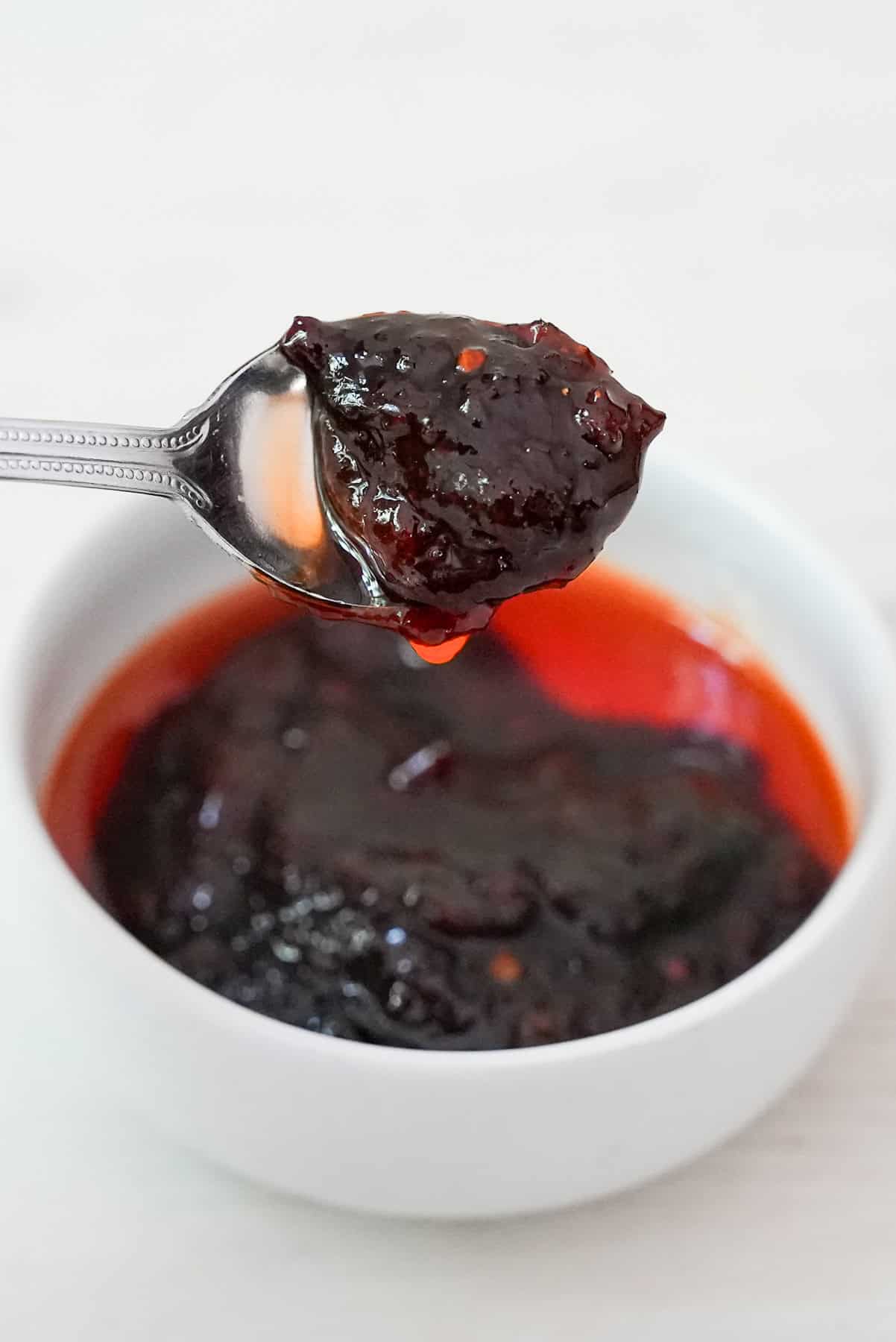
The basis of this paste is dried red chilis which have been roasted or fried1 until they are very dark and aromatic. They are combined with fried shallots, fried garlic, dried shrimp, and shrimp paste. Then the mixture is blended until a smooth paste is formed. Tamarind paste, fish sauce, and palm sugar are then added to season the paste. The oil used for deep frying the ingredients is often added to help moisten the paste into more of a thick jam consistency.
NOTE: Nam Prik Pao can be made by either roasting or frying the ingredients. In the olden days, the ingredients were more traditionally roasted or grilled. These days, they are more typically fried.
Thai Dishes that Use Nam Prik Pao
Nam Prik Pao is one of many Nam Priks (chili-based relishes) in Thai cuisine. Nam Priks are used to add flavor to a meal, and are commonly eaten with rice, vegetables, and meat. As a relish, Nam Prik Pao is often served with banana blossoms, Thai basil, steamed squid, and crispy pork.
However, Nam Prik Pao is unique among Nam Priks in that it is also used as a seasoning paste in Thai cuisine. It is mainly used to season soups, salad dressings, and stir fries. But it can really be used in any dish where you need additional round flavor.
Tom yum soups are probably the most famous Thai dishes that feature Nam Prik Pao. Tom kha soups also benefit from the round, roasted flavor and additional spice and sweetness from this paste. Nam prik pao is also featured in various stir fries. Chicken with Roasted Chili Paste and Crab Curry Stir Fry are two prime examples. Several salad dressings are made with this roasted chili paste as an ingredient, including Thai pomelo salad and Pla Goong. I also prefer using Nam Prik Pao to Red Curry Paste in my Thai peanut sauce, as it provides a more balanced spice to the dipping sauce.
In addition to using Nam Prik Pao as a relish and a seasoning paste, you can use it as a spread or dip as well. Spread it like jam on a piece of toast or serve it as a dipping sauce for pork rinds. Its nicely balanced flavor can be used in a myriad of different ways.
Where Can I Find Nam Prik Pao?

This key ingredient in Thai cuisine is fortunately available at most major Asian markets. It is typically sold in a glass jar in the dry goods aisle. Nam Prik Pao is also readily available online. I typically use the Pantai brand, although several different Thai brands are available.
If you prefer, Nam Prik Pao can also be made from scratch. As the commercially available ones are quite good, I have not yet ventured to make my own. However, there are several recipes for this condiment online, if you'd like to make it yourself.
Alternatives
Unfortunately there are no good alternatives to Thai Roasted Chili Paste. It has such a unique flavor that no other commercially available chili paste will work as a substitute.
Storage
Nam Prik Pao can be stored in the pantry until it is opened, and should be refrigerated after opening. It will last for many months refrigerated.
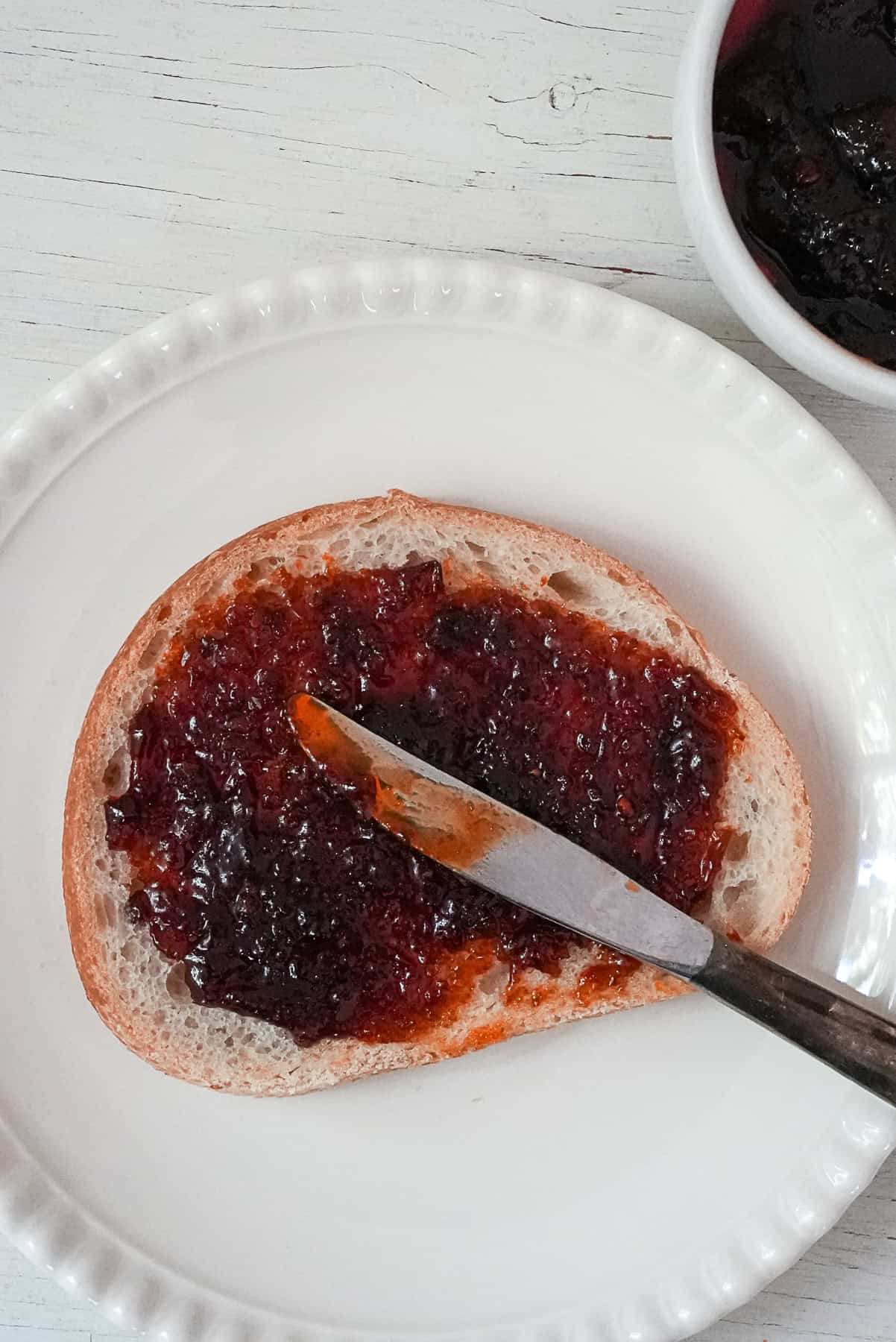
The Thai Roasted Chili Paste known as Nam Prik Pao is a versatile paste that's used fairly extensively throughout the Thai kitchen. Its roasted sweet and spicy flavors help to liven up many Thai dishes, and can even add a punch of Thai flavor to western foods as well. If you are planning on cooking Thai food at home, it's definitely a good condiment to keep on hand!




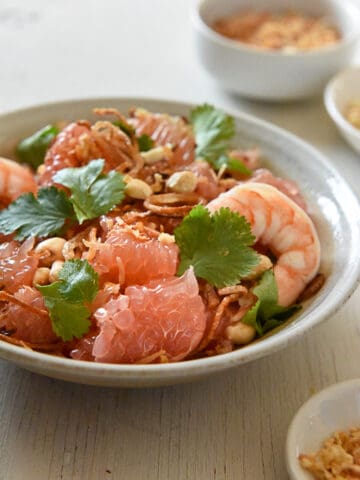
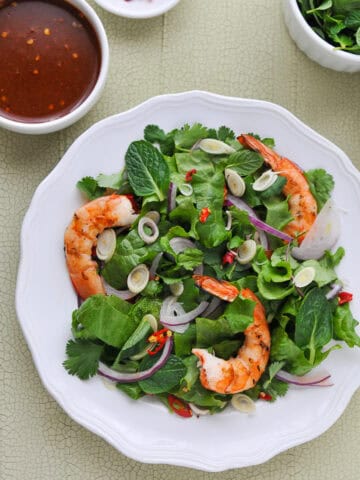
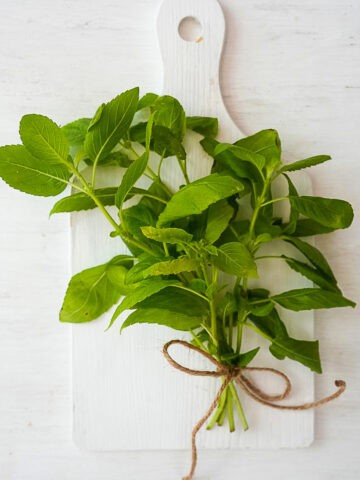

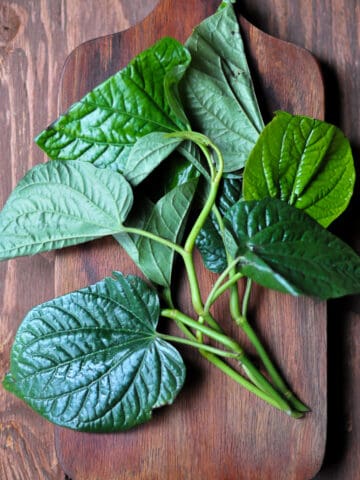
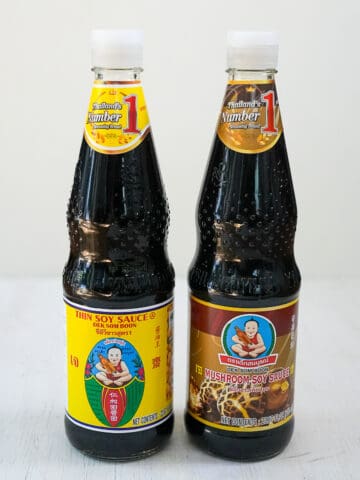
Leave a Reply